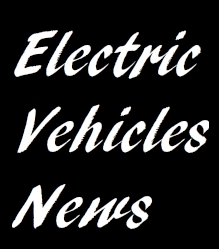The Owen Magnetic was a brand of luxury automobile
manufactured between 1915 and 1922, and was notable for its use of an
electromagnetic transmission. The manufacture of the car was sponsored
by R.M. Owen & Company of
New York, New York. The car was built in New York City in 1915,
Cleveland, Ohio between 1916 and 1919 and finally in
Wilkes-Barre, Pennsylvania in 1920 and 1921.
The first Owen Magnetic was introduced at the 1915 New York auto
show when
Justus B. Entz's electric transmission was fitted to the Owen
automobile. Walter C. Baker, of Cleveland Ohio, owned the patents on the
Entz transmission thus each of the 250 Owen Magnetic automobile produced
in New York were built under license.
While the cars were powered by a six-cylinder engine, power for the
wheels was based upon the same electromagnetic principle that turned the
propeller of the
U.S.S. Battleship New Mexico.
Automobile author Henry B. Lent described the drive mechanism thus:
- "The drive mechanism had no direct connection between the engine
and the rear wheels. Instead of a
flywheel, a generator and a horseshoe shaped magnet
were attached to the rear of the engine's crank shaft. On the forward
end of the car's drive shaft, was an
electric motor with an armature fitted into an air space inside
the whirling magnet. Electrical current, transmitted by the engine's
generator and magnet attached to the armature of the electrical motor,
providing the energy to turn the drive shaft and propel the engine's
rear wheels. Speed for the car was controlled by a small lever
adjacent to the steering wheel."
Jay Leno (Jay Leno's Garage) comments:
I own what can be considered an ancestor of today's hybrids, an Owen
Magnetic. First seen at the auto show in New York City in 1915 — just
about the time that Baker Electric gave it up — the Owen Magnetic has a
gas engine and an electric generator.
This drivetrain was the brainchild of George Westinghouse. The engine
powers the generator, which creates a large magnetic force field between
the engine and drivewheels. There's no mechanical transmission. The
driver moves a rheostat through four quadrants — a lot easier than
shifting, and grinding, the straight-cut gears of the day — and the car
moves ahead progressively, giving occupants that odd feeling you get
when you try to push similar-pole magnets against each other. Both
Enrico Caruso and John McCormack drove Owen Magnetics.
Owens were expensive and really sophisticated. They had an advanced,
24-volt electrical system when most cars had only 6 volts. And Owen
Magnetics had a black box called "the brain." There's a big warning
label right on it that reads, "Do not attempt to fix this or alter it.
Only the factory can do this." Of course, the factories were located in
Cleveland and Wilkes-Barre, Pa. That was a big help. And so the Owen
Magnetic failed in 1921.
The car became as famous as the company's clientele which included
Enrico Caruso and
John McCormack. Owen Magnetics were advertised as "The Car of a
Thousand Speeds"
In December 1915, the concern was moved to Cleveland when the R.M.
Owen Company joined Walter Baker (of
Baker Motor Vehicle) and the Rauch & Lang concern. The Baker
Electric Car company would produce the car, Rauch and Lang would build
the coachwork. Because of the combined resources, the 1916 Owen Magnetic
increased its model range for 1916 model year, with prices in the $3,000
to $6,000 dollar range. Production continued through 1918 when Baker
shifted its focus to War goods manufacturing.
The company reorganized as the Owen Magnetic Motor Car Company of
Wilkes-Barre Pennsylvania and resumed production, this time with an
order for 500 vehicles from Crown Limited of
Great Britain. Under the terms of the agreement, the cars were named
Crown Magnetic, however before the order could be fulfilled, Owen
Magnetic filed for receivership.
The Woods Dual Power car manufactured by the
Woods Motor Company in Chicago also used the Entz transmission. The
Woods car was similar in many ways to today’s hybrids. It used both a
gasoline engine and electric motors to propel the wheels and utilized
braking to recharge the batteries.
